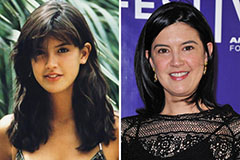Innovative Solutions in Assistive Innovation for Visual Disability
The landscape of assistive modern technology for aesthetic problems is developing rapidly, offering a series of ingenious services that enhance availability and self-reliance. From sophisticated mobile phone applications that help with navigation to wearable tools created for real-time assistance, these tools are reshaping the experiences of those with aesthetic impairments. The combination of smart home modern technologies and educational resources has the possible to foster better neighborhood involvement. Nonetheless, the effects of these innovations increase vital inquiries regarding their accessibility and performance in varied contexts, calling for a better exam of their wider effect.
Improvements in Smart Device Applications
Over the last few years, developments in smart device applications have significantly changed the landscape of assistive technology for individuals with visual problems. These applications utilize the effective sensors and capabilities of contemporary mobile phones to supply users with tools that improve freedom and accessibility in their day-to-days live.
Remarkable amongst these technologies are applications made for item acknowledgment, which make use of the smartphone's video camera to identify things and give verbal descriptions. Such attributes empower users to navigate their environments better, whether determining products in shops or finding individual valuables in your home. Furthermore, text-to-speech applications have boosted considerably, allowing customers to catch printed message with their tool's video camera and receive split second audio comments, thus facilitating reading and understanding.
Community-driven applications have fostered social communication and resource sharing amongst people with aesthetic impairments, creating a helpful network that boosts their quality of life. On the whole, smart device applications have ended up being essential allies in promoting autonomy and availability for individuals with aesthetic impairments.
Wearable Gadgets for Navigation
Wearable gadgets for navigation have emerged as a groundbreaking remedy for people with aesthetic disabilities, offering hands-free support that improves movement and positioning. These gadgets normally make use of sophisticated modern technologies, consisting of GPS, ultrasonic sensing units, and man-made knowledge, to supply real-time comments and direction to users as they navigate their setting.
One notable example of wearable navigating modern technology is wise glasses, which can identify barriers and relay auditory or haptic feedback to the wearer, permitting reliable and secure motion in various settings. Various other devices, such as belts and vests equipped with sensors, can in a similar way inform users of their surroundings by supplying informs regarding neighboring things or adjustments in terrain.
In addition, lots of wearable tools incorporate with smart device applications, enabling individuals to personalize their navigating choices and get customized path tips. This personalization can considerably boost the customer experience, encouraging people to take a trip with higher self-confidence and independence.
As modern technology proceeds to develop, the capacity for wearable navigating devices to boost the lifestyle for people with visual impairments remains significant, paving the means for even more available and inclusive atmospheres.
Smart Home Modern Technology Integration

Additionally, smart devices outfitted with responsive user interfaces or acoustic comments offer user-friendly communications that provide especially to the needs of those with aesthetic disabilities. Smart refrigerators can introduce their components and expiry days, while clever stoves can guide individuals through the food preparation process with audio instructions.
Home automation systems, such as clever doorbells and safety cameras, supply satisfaction by allowing customers to get signals and access live feeds through their mobile gadgets, enhancing personal security (AI-powered visual aids). Furthermore, integration with tablet computers and smartphones guarantees that users can handle their home atmosphere from anywhere within their facilities
As smart home technology remains to develop, it holds the possible to change the living experiences of people with visual problems, fostering independence and improving high quality of life in a progressively linked world.

Educational Tools and Resources
Accessibility to effective academic tools and resources is vital for individuals with aesthetic disabilities, as it encourages them to involve completely in their discovering experiences. Numerous assistive modern technologies have actually been developed to improve availability and foster independent knowing.
Additionally, educational software specifically developed for visually damaged individuals offers features such as high-contrast modes and customizable message dimensions. These tools fit varied discovering styles and make certain that trainees can tailor their educational experience to their needs.
Furthermore, accessibility to digital libraries and audio description publications expands the series of readily available understanding products, enabling pupils to check out subjects extensive without the limitations imposed by traditional print sources. Collective systems that incorporate availability attributes also assist in group tasks, making sure that visually damaged trainees can add meaningfully along with their peers.
Community Assistance and Interaction
A robust network of neighborhood assistance and involvement is essential for individuals with visual impairments, fostering a comprehensive environment where they can thrive. Community organizations, regional advocacy teams, and volunteers play a pivotal duty in offering sources, info, and friendship, which are important for boosting the lifestyle for those impacted by aesthetic disabilities.
Involvement tasks such as workshops, get-togethers, and support system not you could try here only promote ability development but also advertise social communication, decreasing feelings of isolation. These campaigns encourage individuals to share experiences, difficulties, and successes, thus strengthening neighborhood bonds. Furthermore, partnerships with regional companies can lead to better access in public spaces, further integrating people with aesthetic disabilities into the neighborhood.
Technology additionally improves community involvement through on-line systems that offer virtual assistance groups and sources, allowing individuals to connect no matter of geographical barriers. By using both in-person and digital services, neighborhoods can develop a comprehensive assistance network. Inevitably, promoting partnership amongst different stakeholders-- consisting of families, instructors, and healthcare experts-- ensures that people with aesthetic problems get the all natural assistance necessary to browse life successfully and with dignity.
Final Thought
Cutting-edge services in assistive modern technology for visual problems dramatically enhance the lifestyle for individuals dealing with these obstacles. The combination of mobile phone applications, wearable gadgets, wise home modern technology, and educational tools cultivates better freedom and ease of access. Community assistance and engagement further encourage visually damaged individuals, advertising inclusivity and involvement in different elements of life. Jointly, these innovations not just change day-to-day experiences yet likewise lead the way for an extra fair culture.
The landscape of assistive innovation for visual problems is progressing rapidly, providing a variety of ingenious services that boost availability and independence. Community-driven applications have actually cultivated social communication and source sharing amongst individuals with visual problems, producing a check my reference helpful network that boosts their quality of life. On the whole, smartphone applications have come to be essential allies in advertising freedom and availability for individuals with visual disabilities.
Lots of individuals with aesthetic impairments are discovering greater autonomy with the integration of wise home innovation.Innovative solutions in assistive modern technology for visual problems significantly improve the quality of life for people facing these challenges.
 Alicia Silverstone Then & Now!
Alicia Silverstone Then & Now! Robert Downey Jr. Then & Now!
Robert Downey Jr. Then & Now! Charlie Korsmo Then & Now!
Charlie Korsmo Then & Now! Phoebe Cates Then & Now!
Phoebe Cates Then & Now! Tyra Banks Then & Now!
Tyra Banks Then & Now!